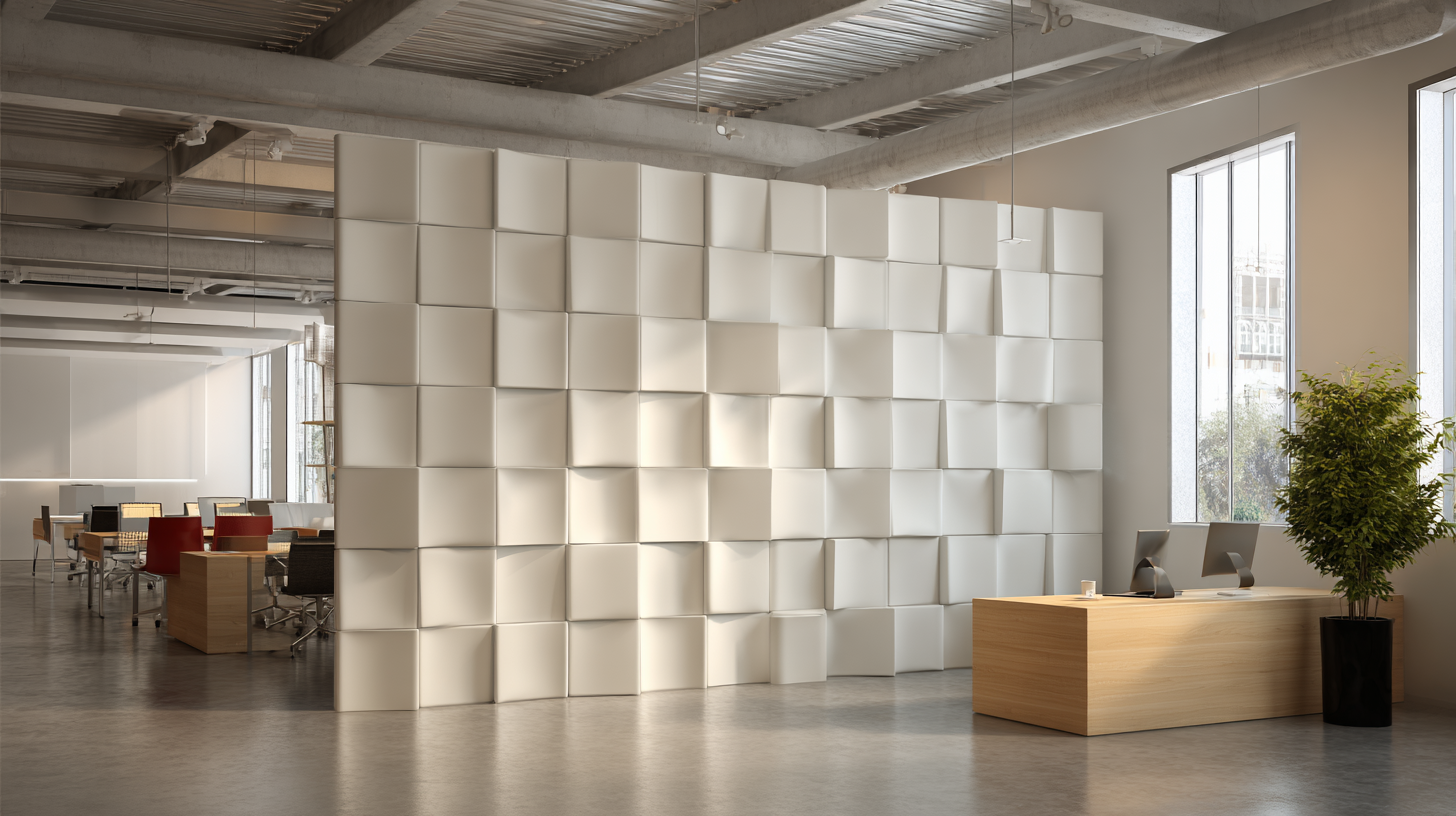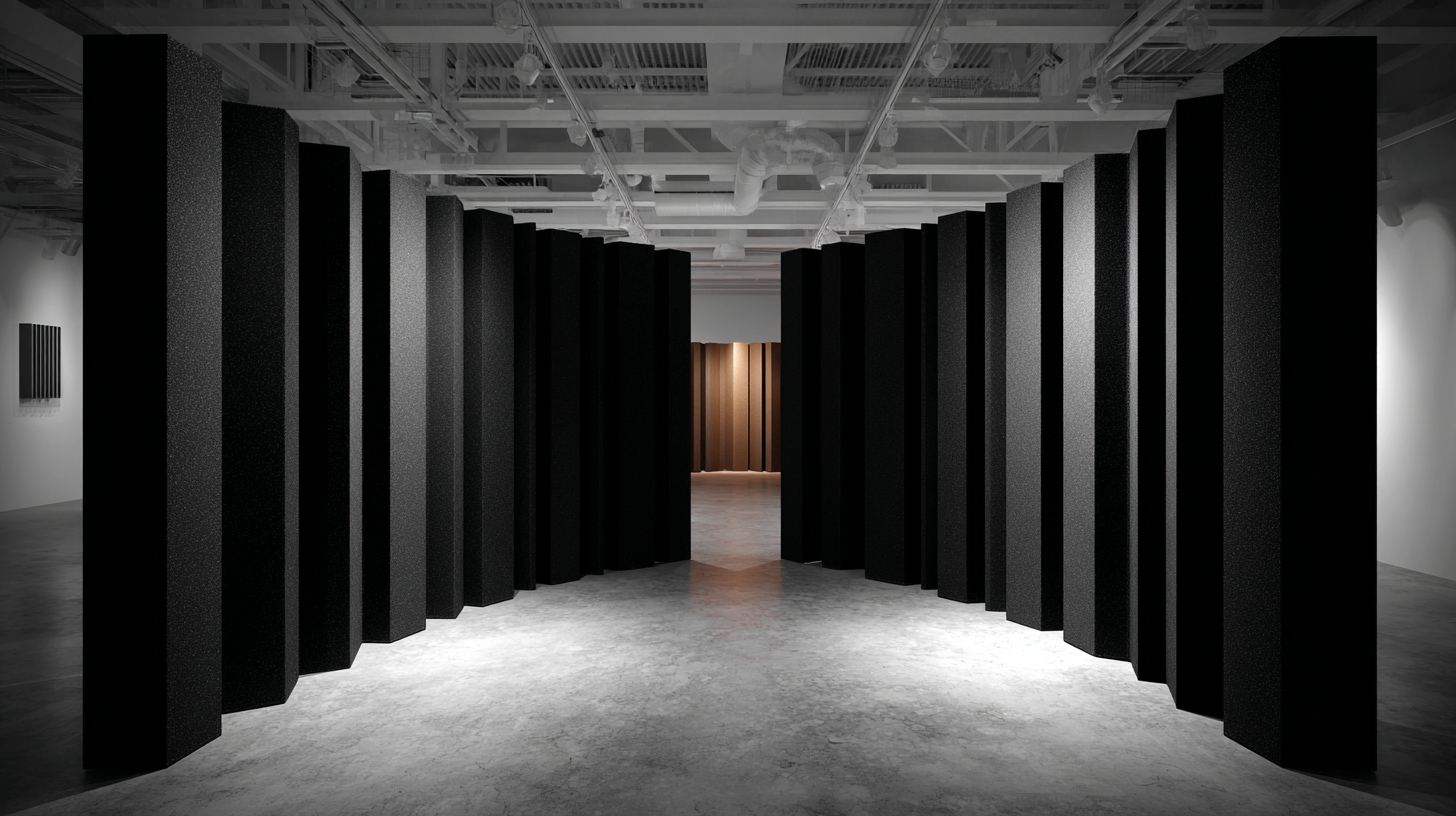
- Ginazhao@wanglumaterial.com
- Mon - Sat at 7:00AM to 9:00PM



In today’s fast-paced world, creating a peaceful environment in our homes or workplaces is more important than ever. Noise pollution can significantly affect our concentration, productivity, and overall well-being. One effective solution to combat this issue is the integration of sound absorbing panels into your space. These innovative panels not only enhance the acoustics of a room but can also reduce noise levels by up to 70%. In this blog, we will explore the seven best sound absorbing panels available on the market, providing insight into their unique features, installation tips, and how they can transform your space into a quieter and more comfortable sanctuary. Whether you're setting up a home office, a music studio, or simply looking to minimize distractions in your living area, our guide will help you find the perfect sound absorbing panel to meet your needs.

When it comes to sound absorption, the variety of panels available can drastically affect effectiveness and aesthetic appeal. Common types include acoustic foam panels, fabric-wrapped panels, and wooden slat panels. Acoustic foam, often made from polyurethane, is designed to dissipate sound waves, reducing echo in spaces such as recording studios and home theaters.
According to a report by the Acoustical Society of America, high-density foam panels can reduce noise levels by as much as 70%, making them ideal for environments sensitive to sound.
 Fabric-wrapped panels provide a more versatile option, combining style with functionality. These panels are constructed with sound-absorbing cores and are covered with aesthetically pleasing fabrics. A study from the National Institute of Standards and Technology indicates that fabric-wrapped panels can enhance sound quality in large spaces, such as conference rooms or auditoriums, while also offering a complementary design element.
Wooden slat panels, on the other hand, not only absorb sound effectively but also add warmth to a room's design. The choice of panel will ultimately depend on the specific acoustical needs of your space and the desired style, underscoring the importance of understanding the various options available.
Fabric-wrapped panels provide a more versatile option, combining style with functionality. These panels are constructed with sound-absorbing cores and are covered with aesthetically pleasing fabrics. A study from the National Institute of Standards and Technology indicates that fabric-wrapped panels can enhance sound quality in large spaces, such as conference rooms or auditoriums, while also offering a complementary design element.
Wooden slat panels, on the other hand, not only absorb sound effectively but also add warmth to a room's design. The choice of panel will ultimately depend on the specific acoustical needs of your space and the desired style, underscoring the importance of understanding the various options available.
When it comes to enhancing sound absorption in a space, the choice of material plays a crucial role in determining the efficiency of noise reduction. Different materials possess unique acoustic properties that affect how sound waves are absorbed, reflected, or transmitted. For instance, porous materials like foam and fabric are known for their superior sound-absorbing qualities. These materials trap sound waves within their structure, significantly reducing echo and reverberation.
On the other hand, denser materials such as wood and metal may reflect sound rather than absorb it, making them less effective in noise reduction. Hybrid solutions that combine both porous and dense materials can also be effective, offering a balance between sound absorption and aesthetics. For those seeking to optimize sound control in their environments, understanding the interplay between material composition and sound absorption performance is essential. By carefully selecting the right panels for specific spaces, you can achieve significant noise level reductions, enhancing comfort and productivity in any setting.
When choosing sound-absorbing panels, the aesthetic appeal plays a crucial role in creating a harmonious space without compromising on functionality. According to a report by the Acoustical Society of America, aesthetically designed acoustic panels can enhance user experience by significantly improving overall room ambiance while reducing noise levels by up to 70%. This dual purpose allows homeowners and businesses alike to maintain a visually pleasing environment while effectively managing sound.
Moreover, a study conducted by the National Institute of Standards and Technology (NIST) indicates that the integration of attractive sound panels can lead to increased satisfaction among occupants, particularly in commercial settings. The right design can help complement existing decor and even reflect a brand's identity in an office environment. With a variety of materials and styles available, from fabric-wrapped panels to artistic designs, selecting sound panels that align with your interior design can transform a standard room into a sophisticated, quieter space.

When it comes to optimizing sound absorption in your space, installation methods play a crucial role. Proper placement of sound absorbing panels is essential for achieving the best results. According to a study by the National Institute of Health, sound absorbing materials can reduce noise levels by up to 70% when strategically installed. For best practices, panels should be positioned at reflection points, typically one-third of the way from the wall and evenly distributed throughout the room. This technique enhances the acoustic qualities by targeting the highest noise reflection areas.
Additionally, the material composition of the panels contributes significantly to their effectiveness. High-density foam, for example, has been shown in various industry reports to provide superior sound absorption across a wide frequency range, especially in mid to high frequencies. When installing these panels, ensuring a tight seal to the wall and avoiding gaps can further maximize sound absorption efficiency. Combining effective installation techniques with high-quality materials fosters an environment that not only mitigates noise but also improves overall sound clarity within any given space.
When evaluating sound-absorbing panels, it’s crucial to consider the balance between acoustic performance and cost. According to a report by the Acoustical Society of America, effective sound absorption can reduce noise levels by up to 70%, which significantly enhances the auditory environment in both residential and commercial spaces. High-density panels, particularly those made from mineral wool or eco-friendly materials, outperform less dense options, offering a Noise Reduction Coefficient (NRC) of 0.85 or higher. However, these premium panels often come with a higher price tag, sometimes exceeding $3 per square foot.
On the other hand, budget-friendly alternatives, such as polyester-based panels, typically provide an NRC range of 0.5 to 0.7, offering satisfactory performance for smaller rooms or less acoustically demanding environments. A study conducted by Sound & Vibration Journal indicates that while cheaper panels can be effective, investing in premium options can yield longer-term benefits in noise control and durability. Therefore, understanding the specific acoustic needs of your space and aligning them with your budget is key to making an informed decision that ensures optimal sound absorption without breaking the bank.
| Panel Type | Material | Noise Reduction (dB) | Cost per Panel ($) | Overall Rating (out of 5) |
|---|---|---|---|---|
| Acoustic Foam Panel | Polyurethane Foam | 30 | 25 | 4.5 |
| Fabric Wrapped Panel | Mineral Wool | 35 | 45 | 4.8 |
| Wooden Acoustic Panel | Plywood | 28 | 60 | 4.2 |
| Soundproofing Blanket | Fiberglass | 25 | 35 | 4.0 |
| Polyester Acoustic Panel | Recycled Polyester | 32 | 40 | 4.6 |
| Resin Acoustic Panel | Polyester Resin | 34 | 55 | 4.4 |
| Hanging Baffle | Mineral Wool | 40 | 50 | 4.9 |





